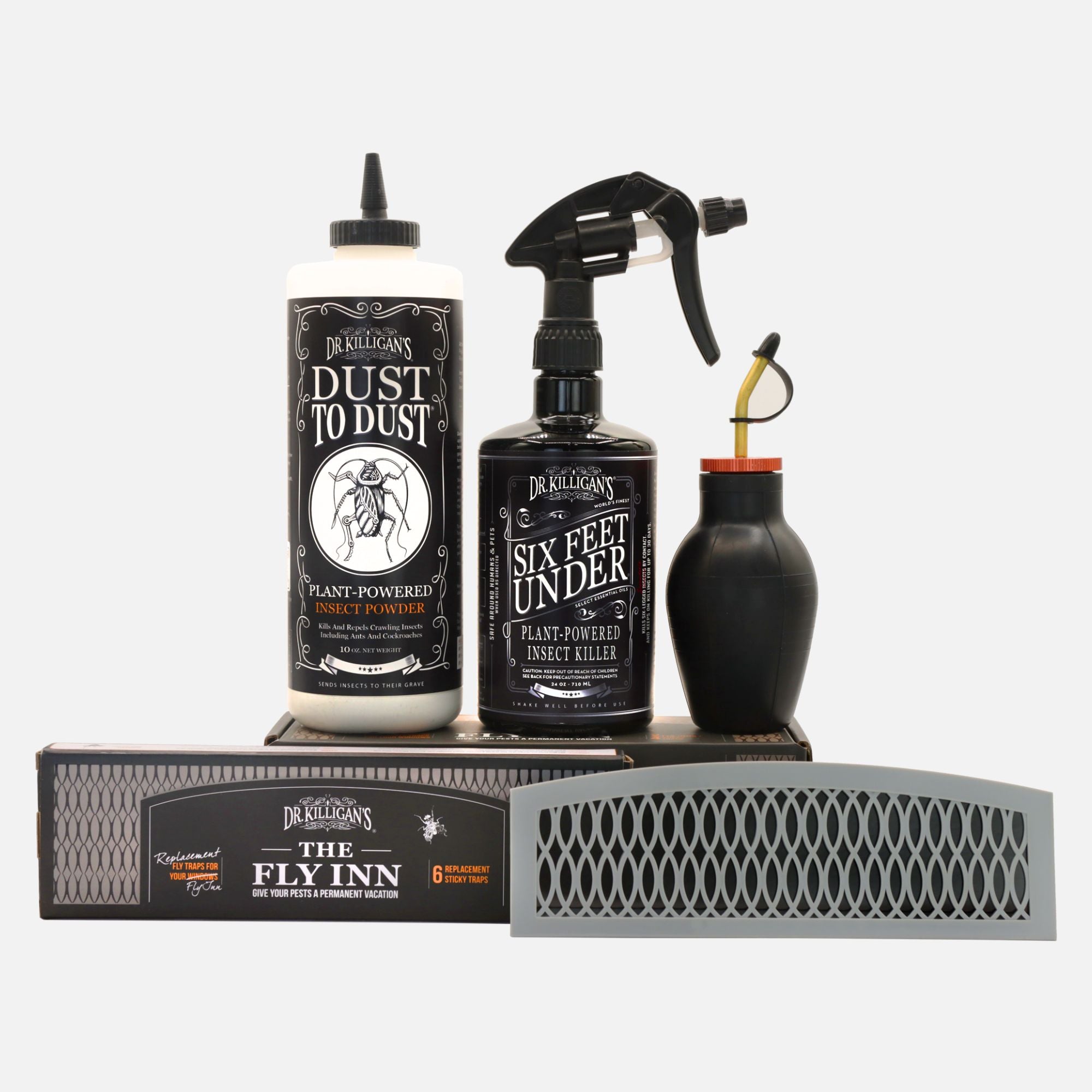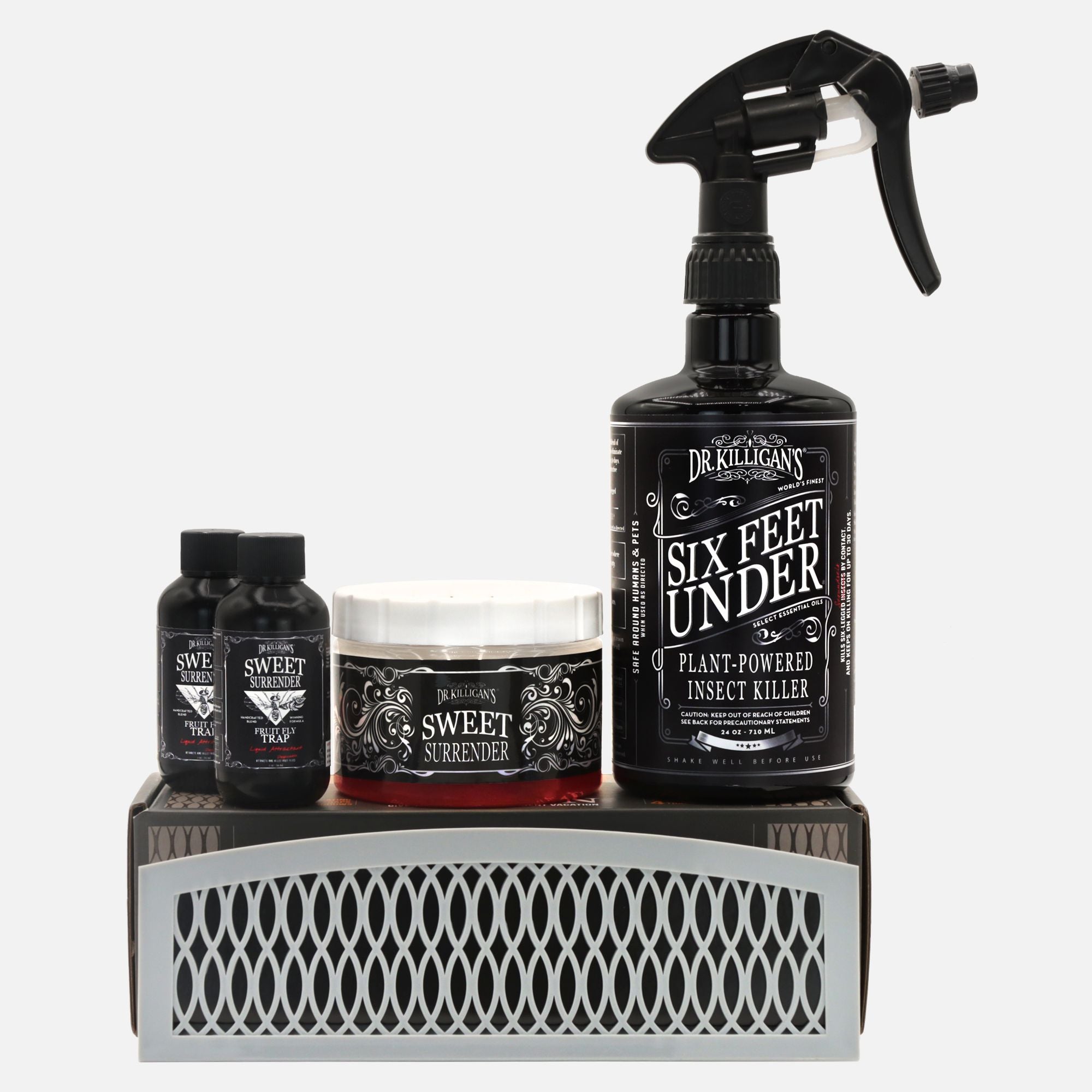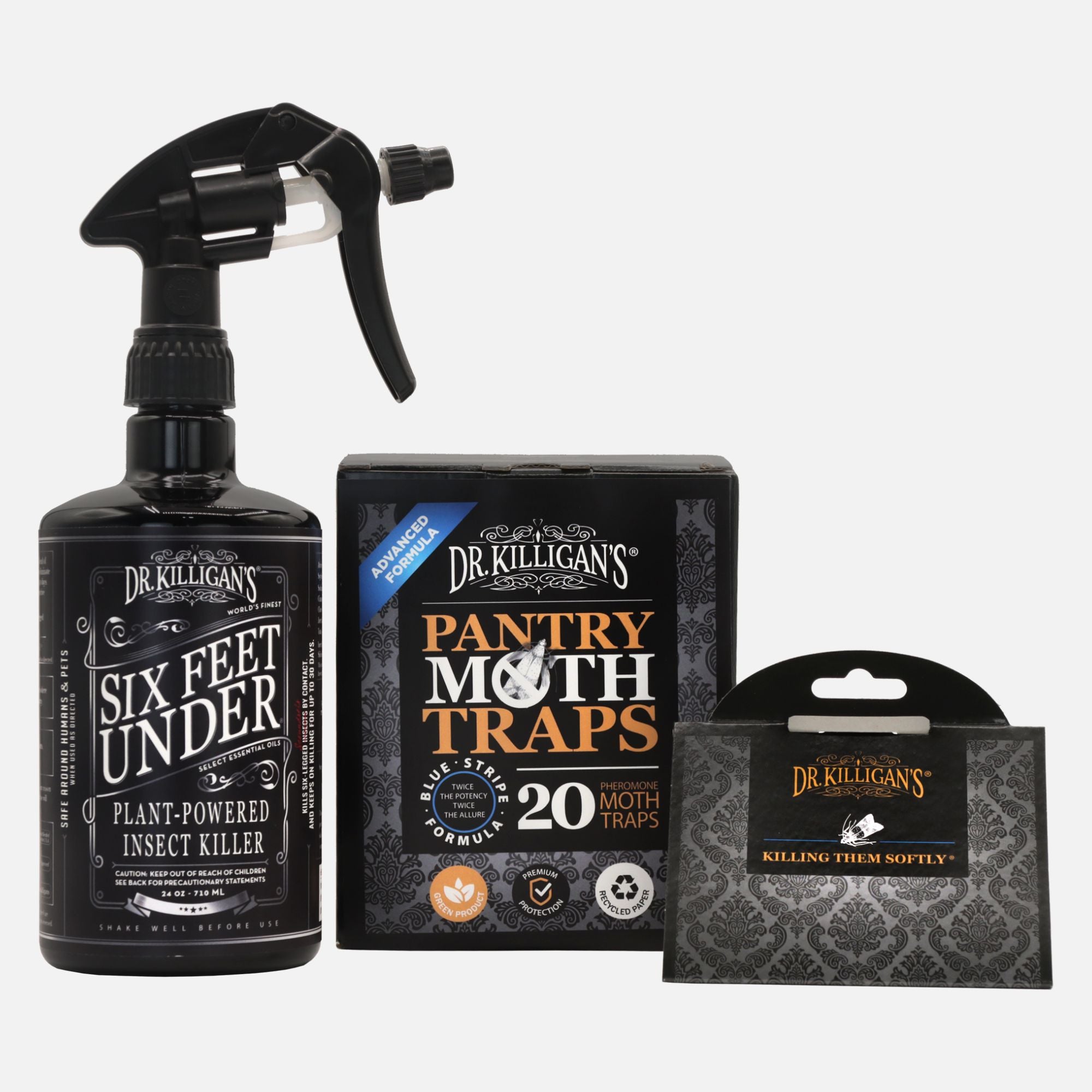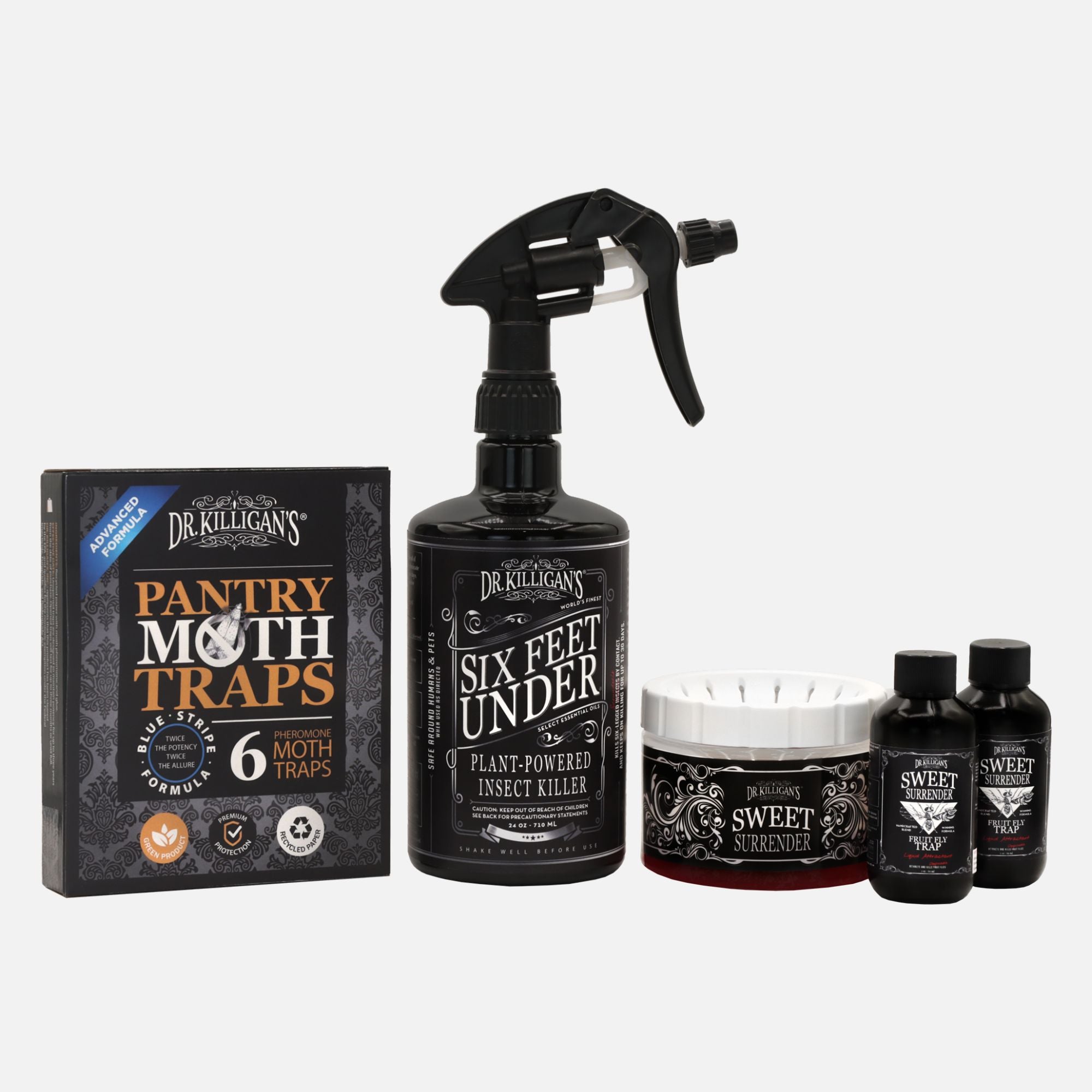Updated on May 15th, 2025
Wondering how to get rid of clothes moths once and for all? These tiny pests can do considerable damage—nesting in heirlooms, laying eggs in your vicuña pull-on sweater (only the finest and rarest wool in the world) and embarrassing you at dinner with mysterious holes in your scarf.
Whether or not you’ve experienced their insatiable cravings, it’s wise to prepare for these winged miscreants that happily take up closet residence. In this guide, you’ll learn how to identify, prevent and get rid of clothes moths—before they make a meal out of your wardrobe.
What attracts clothes moths to my home?
- Sweat, body oils and food stains on natural fibers
- Dirty, undisturbed clothing
- Poorly ventilated, dark storage spaces
How to get rid of clothes moths step by step
1. Assess the situation & identify the winged pest
In your desire to quickly kill these clothes-eating invaders, it’s easy to overlook the exact type of moth you’re dealing with. Several species of moths will take up residence in your home.
After you’ve identified your moth and feel confident that you have neither a brown house moth, a white-shouldered house moth nor a Mediterranean pantry moth, it’s time to focus on how to get rid of clothing moths—the real culprits behind fabric damage. Note: Do not confuse them with pantry moths, as these two species are often mixed up.
Before ripping open your box of Clothing Moth Traps, ask yourself these four questions:

- Is my moth a weak flyer, tending to flutter about rather than fly in a direct pattern?
- Does it shy away from light, hiding in dark locations?
- Does it have tiny tufts of golden or reddish hair on its head? (You’ll need to catch one to find out. A magnifying glass may be helpful. Remember: They don’t bite.)
- Have you found evidence of its destructive nature? Clothing moths tend to graze along the surface of keratin-rich fabrics, but they can also chew holes.
If you answered "yes", you’re likely dealing with clothes moths.
What are the signs of a clothes moth infestation?
Once you’ve assessed behavior and features, confirm the infestation by checking for these common signs:
- Irregular holes in natural fabrics, especially wool, silk or cashmere
- Silken webbing or cocoons left behind on clothing, drawers or shelves
- Tiny white larvae (often mistaken for lint) or shed casings
- Adult moths fluttering away from closets or dark corners when disturbed
2. Discard infested clothes to stop moth spread
Once you can confidently say "it’s a clothing moth," meticulously go through your wardrobe. The reason I write "meticulously" is that clothing moth larvae—though they will not eat synthetic fibers—will eat through them to burrow into the natural fibers underneath, which includes much more than just your wool sweater. They’re not called "wool moths" after all.
If the item is beyond repair with your needle and thread skills, place it in a trash bag, seal it with twist ties or knot it up and immediately dispose of it in the outdoor garbage can.
3. Thoroughly clean the clothes you keep
You have two choices in this matter: hot or cold.

If you plan to kill these moths using heat, you’ll need to choose one of these three methods:
- Wash your clothes in hot water (at least 120°F). You may need to turn up your water heater, as some heat is lost in transit. Standard water heater settings range from 120°F to 125°F.
- Dry clean your clothes. This is the most effective (though more expensive) method, especially for delicate items that may be damaged by water or steam.
- Steam your clothes thoroughly. Steam must fully penetrate the garment’s fibers to be effective. This requires precise control of duration and temperature—something best left to steam-cleaning experts, especially if the garments are delicate or valuable.
If you plan to kill these moths using cold, you’ll need to:
- Identify and isolate infested clothing items. Focus on pieces that show signs of larvae or damage.
- Place the items in a sealed, airtight bag. Do not overstuff the bag—leave space for cold air to circulate.
- Seal the bag tightly. This prevents condensation and frost from damaging your clothes.
- Freeze the items for at least 72 hours—ideally, a full week. Your freezer should maintain a consistent temperature of 0°F or colder for the treatment to be effective.
4. Clean your closet
Vacuum thoroughly where the affected items were stored, paying special attention to corners, edges and baseboards. Use a vacuum with strong suction and crevice attachments to remove pet hair, lint or debris. While clothing moths don’t feed on synthetic carpet fibers, accumulated organic matter—like pet hair—can sustain their larvae and serve as a site for egg-laying.
Once vacuumed, spray a light dusting of Six Feet Under Plant-Powered Insect Spray on your carpet. This plant-powered kill-on-contact solution will kill any remaining eggs or larvae that may have gone unnoticed. (We recommend choosing a small, inconspicuous spot of your floor covering to test on before committing.) As a final step, wipe down all shelves, walls, storage bins and other surfaces in your closet with Six Feet Under to ensure no moths—or their offspring—are left behind.
Not sure where to focus your cleaning efforts?
Here’s where clothes moths are most likely to hide:
- Closets
- Storage bins
- Between carpet edges and baseboards
- Inside wool rugs or upholstery seams
Can I get rid of clothes moths naturally?
Yes—natural clothes moth control is possible, effective and safer than using traditional chemical mothballs.
If you're looking to protect your closet without harsh toxins, try these proven natural methods:
-
Dust to Dust Plant-Powered Insect Powder
This plant-powered silica blend physically damages the moth larvae's exoskeleton, leading to dehydration and death. Apply it into cracks, baseboards and crevices where moths may be nesting. It's a powerful alternative to diatomaceous earth.
-
Six Feet Under Plant-Powered Insect Spray
A kill-on-contact spray made with cinnamon and clove oils. Use it to wipe down closet shelves, drawers and storage containers after vacuuming. It's safe for use around people, pets and even wool garments. -
Cedar Planks and Cedar Canisters
Cedar naturally repels moths due to its powerful essential oils. Hang cedar planks on closet rods to protect hanging garments or place cedar canisters—filled with aromatic cedar chips—on shelves, in drawers or inside storage bins. Refresh with Cedar Ward or sand periodically to maintain potency.
Using these methods together forms a strong, natural line of defense—no mothballs required.
5. Place traps
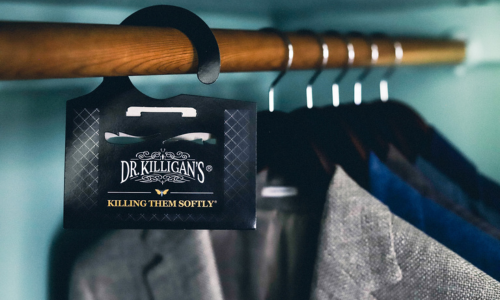
Place one trap on your clothing rod and one low to the ground in your closet. Because clothing moths are poor fliers, positioning a trap near the floor can be especially effective. For added coverage, place a third trap about 8–10 feet away on the opposite side of the room—this helps lure moths away from your closet.
The trap's pheromone attractant can permeate up to 100 ft. if there is constant airflow, which will help draw out any moths in the vicinity. When placing your traps, keep in mind that clothing moths thrive in dark, undisturbed spaces.
Dr. Killigan's Clothing Moth Traps are specifically designed to attract and trap the two species that damage clothes: the webbing moth (Tineola Bisselliella) and the casemaking moth (Tinea Pellionella). If you have either of these, our traps will do the moth killing for you.
Do mothballs work to get rid of clothes moths?
- Traditional mothballs contain naphthalene or paradichlorobenzene—both hazardous chemicals.
- Not recommended due to toxicity risks, especially in homes with children or pets.
-
Plant-based repellents and traps are safer and more effective alternatives
6. Be patient
Lastly, it is important to understand that while you are trapping adults today, the eggs they have laid will hatch in the next 20-30 days. Give it time, and even when things start to lull, remain vigilant. Catching all of the male moths, as the traps only attract and catch the males, will not stop the life cycle immediately due to current larvae.
The solution is to keep traps out so that you can catch every generation of adult males before they mate. In doing so, there will soon be no eggs left, meaning you will have no moths left.
How to keep clothing moths a nuisance of the past
You must be proactive. To keep clothing moths a-thing-of-the-past, here are some tips and tricks:

- Purchase the Insect Buster and fill it with Dust to Dust Plant-Powered Insect Powder. Disperse this into all cracks and crevices where the moths may be gaining a foothold.
- Take out, shake and wear all of your clothes.
- Keep clothing-moth-loving attire that you don’t wear frequently in sealed clothing bags. If storing for a long period of time, use vacuum-sealed plastic bags, placing a Cedar Plank in each one.
- Have your wool carpets or rugs professionally cleaned twice a year. In the meantime, lift furniture and vacuum every square inch of these carpets and rugs.
- Wash your clothes regularly. Moths are spellbound by the scent of urine, sweat or food stains.
- Purchase a freezer for those cashmere sweaters.
- Keep one of Dr. Killigan’s Clothing Moth Traps out at all times to make you aware of a potential issue. Once opened, the trap is good for three months; unopened, it is good for three years from the date of manufacture.
- It may seem that clothing issues are on the rise. Together, let’s be prepared.
What it really takes to win the war against clothing moths
Having a clothing moth infestation is no joke. It takes extreme diligence, patience and hard work to get rid of these wool-eating, pet-hair-munching, food-stain-loving pests. Have you had a clothing moth issue? How did you get rid of those winged invaders? Share your tips and tricks by contacting our wonderful customer service team.








